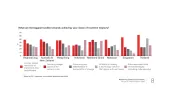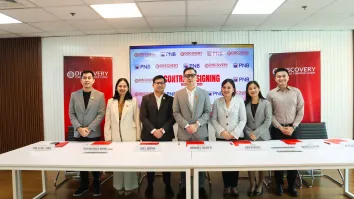Harnessing technology to optimise Asian trade
By Joon Kim and Arnon GoldsteinIn a period of uncertainty for global trade, fuelled by protectionism and increasing concerns regarding a potential US-China trade war, the strength and resilience of Asian trade endures.
Asia has cemented its position as a global manufacturing hub and, with rising wealth levels across the region sparking a surge in consumption, Asia has also become a rapidly growing import market. Over two thirds of major commodities are now produced, traded and consumed in Asia, and the region is set to account for approximately 60% of global trade growth up to 2020.
Asia is not only an anchor, but an engine for global trade. Yet, for trade in the region to reach its full potential, trade finance – the fuel of global trade, with an estimated 80-90% of world trade relying on such support – needs to be accessible and optimised. Banks must therefore ensure they can provide effective and efficient trade finance solutions, allowing businesses to realise the breadth of trading opportunities on offer.
Tools to aid trade
New technologies are presenting unprecedented opportunities to progress trade finance capabilities. Digital innovation could help to enhance existing processes across the supply chain, improving speed, visibility, security and reducing costs – thereby enabling more frictionless trade and, in turn, helping to boost trade activity and economic growth. It is predicted that global trade banks, for example, could save in excess of US$2.5b by adopting an “integrated digital solution that incorporates intelligent automation, collaborative digitisation and future technology solutions”, and increase their revenues by approximately 10%.
Trade finance is ripe for digital change. It is believed that four billion pages of documents circulate in documentary trade. According to estimations, a trade finance deal for a single commodity sea cargo can require 36 original documents and 240 copies from up to 27 parties – often taking weeks to complete . Migrating paper-based documentation to a digital format will help to radically reduce inefficiencies – particularly in documentation verification. It will also make collaboration across the global banking network easier, with the information generated within the trade ecosystem more readily available and transmittable.
Optical Character Recognition (OCR) and Intelligent Character Recognition (ICR) are solutions that are gaining prominence in trade finance. OCR technology can read data from a physical document, which can then be used to create an identical digital version. This could help to streamline time-consuming processes, including exchanging and ratifying bills of lading. ICR is more sophisticated: it can recognise characters, remember intricate data patterns and make accurate inferences about a document based on prior learning. ICR could therefore be particularly useful for flagging unusual activity and mitigating manual errors.
Blockchain momentum
Blockchain is also expected to bring significant benefits to trade finance, enabling real-time visibility and tracking, and providing a secure, digital, decentralised platform for document exchange. By reducing risk in this way, blockchain could not only enhance trade finance processes, it could help to facilitate greater access to trade finance for businesses within the region. This is particularly important, as a new report from BNY Mellon, “Overcoming the Trade Finance Gap: Root Causes and Remedies”, revealed that trade finance rejection rates may be increasing in a significant number of institutions – a trend that has been linked to heightened compliance requirements.
While a multitude of blockchain initiatives are underway throughout the industry, in terms of regulatory backing, authorities in Asia are leading the way. For example, the Hong Kong Monetary Authority (HKMA) recently launched a blockchain-based trade finance platform, eTradeConnect, designed to digitalise trade documents and automate trade finance processes. A number of local banks are taking part in the initiative, highlighting Asian banks’ appetite to plug in to new technology, drive digital change and deliver new capabilities to clients.
HKMA and the Monetary Authority of Singapore (MAS) are together developing the blockchain-based Global Trade Connectivity Network (GTCN), with the aim of creating a cross-border blockchain infrastructure – with existing domestic platforms feeding into it – to help make trade finance cheaper, safer and more efficient . While Hong Kong and Singapore will join initially, there is potential to expand to include other geographies.
Collaboration is crucial for the success of blockchain, with the industry needing to establish common standards and protocols to allow data to be shared. Only when this is achieved can the technology be widely applied and used across the global trade industry.
Banking on trade finance
The importance of collaboration to enhance trade finance extends beyond blockchain. Banks in Asia recognise the value of providing innovative solutions to meet evolving market and client needs. Yet for many, investing heavily into digital solutions can prove challenging. Through correspondent banking partnerships – non-compete local-global bank alliances – banks in the region can tap in to the digital capabilities of their global partners and provide cutting-edge trade solutions to clients.
As Asia continues to establish its status as an export and import hub, banks in the region need to ensure they are positioned to harness the evolving technology landscape. By providing effective, streamlined solutions to support client needs, banks can enhance the client trade experience and help ensure that opportunities are captured to the full in this vibrant trading marketplace.
The views expressed herein are those of the authors only and may not reflect the views of BNY Mellon. This article does not constitute treasury services advice, or any other business or legal advice, and it should not be relied upon as such.




















 Advertise
Advertise







